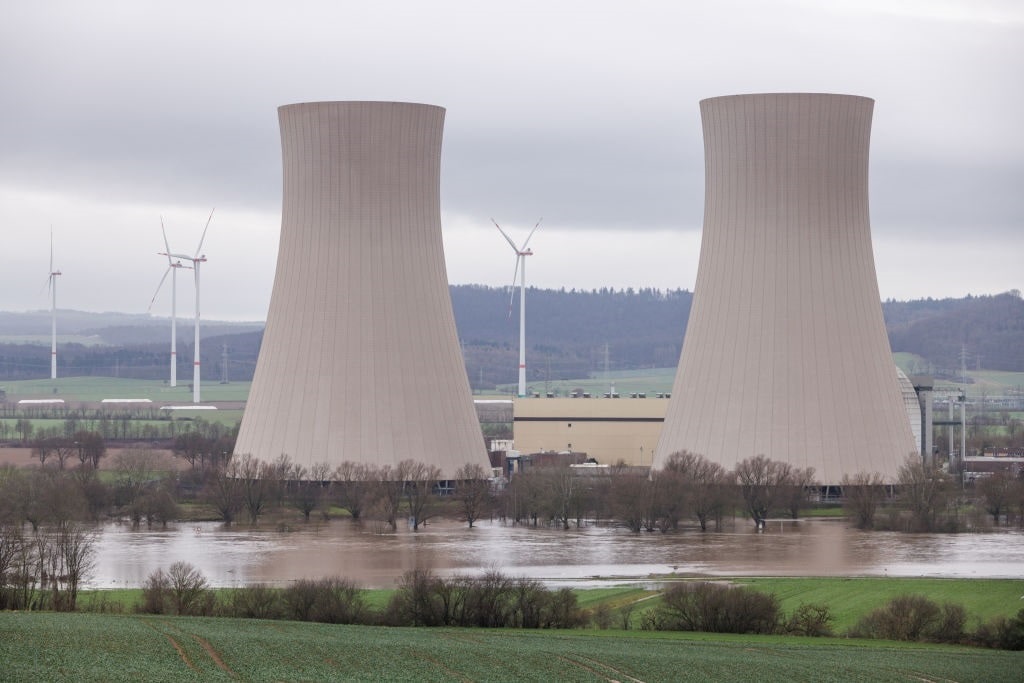Solar panels and EVs are not ready to solve the climate crisis.
Until recently, it appeared that nuclear power was simply off the energy table for climate activists and environmentalists — but they are now embracing its possibilities. This shift likely has been motivated by growing realization that solar panels and EVs just can’t accomplish the grand rescue they promised, along with the daunting environmental problems posed in their manufacture that can no longer be ignored. But the change is also driven by technological and design advances in nuclear reactor technology, for existing fission (atom-splitting) reactors and for a brave new world of fusion reactors that could potentially create energy with less risk and pollution by joining atoms together.
Fission
Modern nuclear power has been produced by harnessing the astonishing energy released when molecules are split. This is the same terrifying power of nuclear warfare, contained in water-cooled concrete control chambers to generate electricity. Yet Fukushima, Three Mile Island, and Chernobyl displayed the potential for calamity from this process and exposed the persistent challenges of safely storing spent nuclear rods.

(Photo by Ole Spata/picture alliance via Getty Images)
At COP28 in Dubai November-December 2023, more than 20 nations signed a pledge to triple nuclear energy capacity by 2030, in what one headline dubbed “the year the UN climate summit went nuclear.” This tacit admission that renewables can’t cut the mustard may also reflect the sober reality that China and the UAE – and many other nations – are moving forward with nuclear power development whether the West likes it or not. Energy is the lifeblood of economic stability and growth: If the United States and other Western nations abandon fossil fuels and nuclear energy (as long demanded by the “Just End Oil” crowd), they will seed their own destruction.
Nuclear Is More ‘Renewable’
Abandoning fossil fuels becomes extremely difficult when they are necessary to mine, heat, process, and fabricate the “renewable” products manufactured to replace them. All renewable manufacturing is ultimately dependent on the fossil fuels it is designed to retire. Nosebleed oil prices compelled a reckoning with the impacts of inflation on the costs of vast solar fields and an EV in every driveway. Concurrently, rising interest rates undermined financing incentives for renewable products. The technological unfeasibility of the Utopian scheme to replace fuels with gadgets becomes clearer daily. Nuclear power quickly becomes economically and politically necessary as the only bailout for errant policy.
The technological timing of this transition is pivotal. It is questionable whether the world should be launching into mass manufacturing and installation of solar panels that are merely 22% efficient when technology promises 34% efficiency panels soon. Nuclear energy technology, in contrast, has been evolving for decades since the 1960s reactors most people envision when they think of nuclear power plants. Unless and until the technological and cost limitations of renewable energy are overcome, nuclear energy presents as a far superior option.
A New Generation
This is why nuclear energy activists were allowed entry into COP28, and climate activists have embraced nuclear power as “an effective way forward.” These are not your grandmother’s nuclear power plants. Beginning with a US-initiated research program in 2000, the “Generation IV International Forum” (GIF) collectively decided on lower-risk fission reactor designs for the future:
“[L]ate in 2002 GIF (then representing ten countries) announced the selection of six reactor technologies which they believe represent the future shape of nuclear energy … These were selected on the basis of being clean, safe and cost-effective means of meeting increased energy demands on a sustainable basis, while being resistant to diversion of materials for weapons proliferation and secure from terrorist attack … Most of the six systems employ a closed fuel cycle to maximise the resource base and minimise high-level wastes to be sent to a repository.”
Fusion on the Horizon
In the background of this nuclear power renaissance lurks nuclear fusion, which creates energy by combining (rather than splitting) lighter elements such as helium or hydrogen: The resulting reaction releases atomic “binding energy.” Nuclear fusion promises the cleanest and safest energy but presents more challenging scientific obstacles. The World Nuclear Association explained:
“Fusion power offers the prospect of an almost inexhaustible source of energy for future generations, but it also presents so far unresolved engineering challenges.
“The fundamental challenge is to achieve a rate of heat emitted by a fusion plasma that exceeds the rate of energy injected into the plasma.
“The main hope is centred on tokamak reactors and stellarators which confine a deuterium-tritium plasma magnetically.”
The scientific jury is still out on whether these fusion challenges can be solved by humankind, especially in time to avert alleged climate doom. But it appears that the world is quietly but quickly moving toward an acceptance of modernized fission reactors much like the Prodigal Son: “Gee, we missed you. Where have you been?” Next thing you know, Greta Thunberg will be advocating for “fast-neutron” nuclear reactor construction to “end” fossil fuels and save the world!

